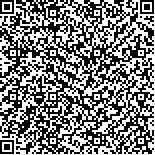|
|
| |
|
|
| 本文已被:浏览 3160次 下载 2173次 |

码上扫一扫! |
|
|
| 黑潮入侵东海陆架途径及其影响研究进展 |
|
杨德周1,2,3, 尹宝树1,2,3,4, 侯一筠1,2,3,4, 孙松1,3,5,4, 俞志明1,3,5,4, 宋金明1,3,5,4, 许灵静1,2,4, 于非1,2,3,4, 宋秀贤1,3,5,4, 于仁成1,3,5,4, 袁华茂1,3,5,4, 李新正1,3,5,4, 袁涌铨1,3,5
|
|
1.中国科学院海洋研究所 青岛 266071;2.中国科学院海洋环流与波动重点实验室 青岛 266071;3.青岛海洋科学与技术国家实验室 青岛 266237;4.中国科学院大学 北京 100049;5.中国科学院海洋生态与环境科学重点实验室 青岛 266071
|
|
| 摘要: |
| 基于中国科学院战略性先导科技专项(A类)“热带西太平洋海洋系统物质能量交换及其影响”的项目二“黑潮及其变异对中国近海生态系统的影响”的航次调查资料、历史资料和数值模拟结果,对黑潮入侵东海的途径、机理和影响研究取得了重要进展,主要认识和成果如下。在长江口邻近海域的赤潮高发区,多学科研究结果证实存在黑潮入侵东海陆架近岸的底部分支,该分支是黑潮影响近海生态过程的主要途径。进一步的研究发现该底部分支存在季节变化:通常情况下,在春季开始出现,在夏季7月份达到最强,可以入侵到近岸50m等深线位置,向北可到达30.5°N附近,然后在秋、冬季其入侵主轴位置逐渐远离岸线向外海偏移,不会入侵到50m等深线以西的近岸区域,该底部分支出现和赤潮发生具有一定的同步性。数值模拟和观测结果表明黑潮入侵底部分支还存在年际变化。基于地球动力学理论,提出了地形β-spiral理论,并为模拟结果和观测资料所验证,该理论可以很好的解释为什么黑潮入侵分支会存在,并且该理论预测出凡是黑潮路径与等深线不平行的地方都会发生入侵流的垂向偏转,底层流的方向和地形梯度的角度决定了入侵主要发生在底层还是表层,且该理论在世界大洋具有普适性。此外,研究还表明,黑潮入侵底部分支可以把具有高磷酸盐、高盐、溶解氧含量相对较低等特征的黑潮次表层水及热带藻种等物质输送到长江口邻近海域,从而对东海陆架生态系统产生重要影响。 |
| 关键词: 黑潮 东海陆架 入侵 ROMS |
| DOI:10.11693/hyhz20170900223 |
| 分类号: |
| 基金项目:中国科学院传略性先导科技专项项目,XDA11020104号,XDA110203052号;国家自然科学基金项目,41576023号,41376030号,41476019号;青岛海洋科学与技术国家实验室鳌山科技创新计划项目,2016ASKJ02-5号;国家重点研发计划项目,2016YFE0101500号,2017YFC1404000号,2016YFC1401601号。 |
|
| ADVANCE IN RESEARCH ON KUROSHIO INTRUSION AND ITS ECOLOGICAL INFLUENCE ON THE CONTINENTAL SHELF OF EAST CHINA SEA |
|
YANG De-Zhou1,2,3, YIN Bao-Shu1,2,3,4, HOU Yi-Jun1,2,3,4, SUN Song1,3,5,4, YU Zhi-Ming1,3,5,4, SONG Jin-Ming1,3,5,4, XU Ling-Jing1,2,4, YU Fei1,2,3,4, SONG Xiu-Xian1,3,5,4, YU Ren-Cheng1,3,5,4, YUAN Hua-Mao1,3,5,4, LI Xin-Zheng1,3,5,4, YUAN Yong-Quan1,3,5
|
|
1.Institute of Oceanology, Chinese Academy of Science, Qingdao 266071, China;2.Key Laboratory of Ocean Circulation and Waves, Chinese Academy of Science, Qingdao 266071, China;3.Qingdao National Laboratory for Marine Science and Technology, Qingdao 266237, China;4.University of Chinese Academy of Science, Beijing 100049, China;5.Key Laboratory of Marine Ecology and Environmental Science, Qingdao 266071
|
| Abstract: |
| Based on abundant data collected in the cruise under Project 2 (The Ecosystem in the Chinese Coastal Seas under the Influence of Kuroshio and Its Variation) of the Strategic Priority Research Program of the Chinese Academy of Sciences (Class A) (Material and Energy Exchange and Its Influence between Ocean Systems in Key Domains of Tropical Western Pacific Ocean), we studied the Kuroshio invasion into the East China Sea: the path, force, and impact, and achieved with good results. Our multiple-disciplinary observations confirm the existence of Kuroshio branch currents off Zhejiang coasts, the frequent algal bloom region. The Kuroshio branch current is the key current affecting the coastal ecosystem, and shows significant seasonal variation. It appears in spring and peaks in July reaching the nearshore area within the 50m-isobath near 30.5°N, and then gradually weakens and withdraws from the 50m-isobath zone in autumn and winter. It nearly co-occurs with algal blooming. Moreover, both observation and modeling show an inter-annual variation of the branch current. To explain the dynamical mechanism of this branch current, we proposed a theory of topographic beta spiral in geophysical fluid dynamics, and well explained the existence of Kuroshio branch current, which has been approved by model results and observations. Furthermore, the theory predicts that the intrusion could occur whenever the mainstream of Kuroshio is not parallel to the isobaths. The surface or bottom intrusion could take place when the angle between the Kuroshio path and the topographic gradient is greater than 90°, which has been proved applicable for the world oceans. The branch can carry phosphate, salinity, low oxygen water, and algal cysts into coastal areas off Changjiang (Yangtze) River estuary and the adjacency, and then significantly influence the local coastal ecosystems. |
| Key words: Kuroshio East China Sea Continental Shelf intrusion ROMS |
|
|
|
|
|
|
